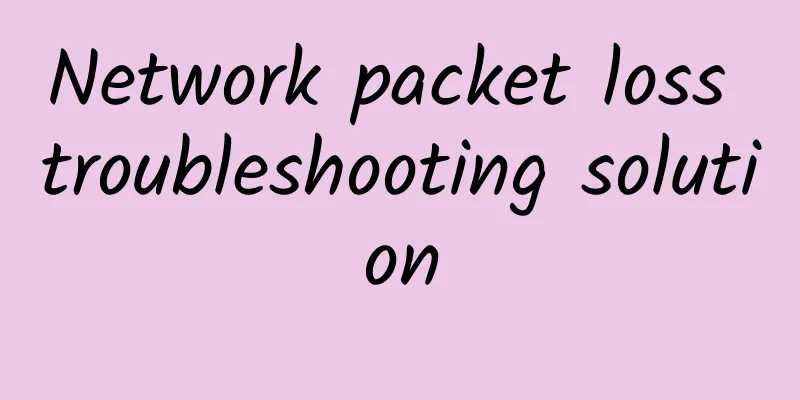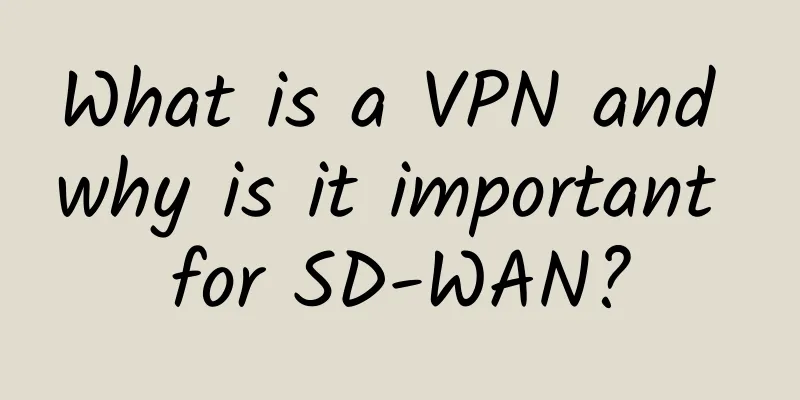P2P Confession | I don’t produce content, I’m just a route planner for content delivery

|
When people mention P2P now, they will think of the Internet financial services that are being "encircled and suppressed" by relevant departments. The ×Zubao incident has made the working people change their minds when talking about P2P. Although it is in danger of the same name, P2P in the Internet technology circle represents a completely different meaning... At present, the most common understanding of P2P is P2P finance, which is a small loan transaction between individuals and a form of financial product. Generally, it requires the help of a professional e-commerce network platform to help the borrower and lender establish a loan relationship and complete related transaction procedures.
However... that's not the point!! The key point is: The darling of the technology circle [P2P] makes its grand debut!!
Sauce! Sauce sauce sauce! What is P2P? P2P is the abbreviation of Peer to Peer. It is the opposite of the client/server (i.e. C/S structure, which is the structure adopted by WWW) that currently dominates the network. In the P2P structure, each node (peer) generally has three functions: information consumer, information provider, and information communication. In terms of computing model, P2P breaks the traditional C/S model, and the status of each node in the network is equal. Each node acts as a server, providing services to other nodes, and also enjoys the services provided by other nodes. P2P technology guides the network computing model from centralized to distributed, that is, the core of network applications spreads from the central server to the terminal devices at the edge of the network. Therefore, the essential difference between P2P and C/S is that there is no central node (or central server) in the entire network structure. The more literal translation of P2P is peer-to-peer network. In the field of Internet, peer-to-peer network is a kind of network structure. Generally speaking, it can be understood as any peer-to-peer relationship, such as the connection between peers, colleagues, friends, etc. In simple terms, P2P directly connects people and allows them to interact directly through the Internet. P2P makes communication on the Internet easier, more direct sharing and interaction, and truly eliminates middlemen. This is a higher level of sharing behavior on the Internet, allowing people to participate in network activities in a more active way. Therefore, P2P has brought infinite imagination to the distribution and sharing spirit of the Internet.
My god, I don't understand how powerful it is~~ The development of P2P As the Internet develops rapidly today, P2P technology, with its unique self-organization and distribution, has become an integral part of the Internet. So how did P2P technology develop, and how will it continue to develop? Let's explore its past and present...
Beat them all up! Beat them all up! I'm going to travel through time In fact, P2P technology appeared very early, but it experienced a period of slow development with the rise of C/S. In recent years, with the trend of Internet of Everything, the development of P2P technology has also entered a peak period. According to its development history, it can be roughly divided into three stages: 1. From the ARPANET era to before the advent of www The Internet originated from ARPANET, which was established by ARPA, the predecessor of the Defense Advanced Research Project Agency (DARPA) of the United States Department of Defense. The network was put into use in 1969. ARPANET is considered the ancestor of the Internet.
Although it can only be regarded as a local area network now, it was epoch-making at that time.
A small step for the Internet, a giant leap for mankind P2P technology has been used since the ARPANET era. For example, USENET, created in 1979, and FidoNet, created in 1984, are both relatively successful distributed information exchange systems that use P2P technology. In this stage, P2P was the main technology, with C/S as a supplement, and the Internet was only used for scientific research. 2. From www to before Napster After the emergence of www, with the widespread use of www, the C/S architecture became dominant. Due to its opposing architecture, P2P fell into a slow development stage until the emergence of Napster changed this situation. 3. After Napster Napster was a music downloading software created in 1998 by Sean Fanning, a genius student at Northeastern University in Boston, USA, in order to solve the problem of slow music downloading speed for himself and his roommates. Naspter founder Sean Fanning featured in Time magazine This program called Napster attracted the attention of countless music lovers and had 80 million registered users at its peak, a number that all other networks could not match. This can probably be regarded as a sign that P2P software has successfully entered people's lives in the www era, and P2P has become popular again. Its basic principle is that when you start the Napster software on your computer, it will turn your computer into a micro server that can provide upload and download services, which can download files for you and also provide downloads for other users who use the Napster software. Napster has a central index server that does not provide any file download except the file name list. All file downloads and file transfers are done on the computers of Napster software users by Napster users. This is the earliest P2P sharing technology, and it is also the prototype of various P2P sharing and transmission technologies now. P2P Applications With the comprehensive penetration of the Internet, P2P is currently developing rapidly, and new P2P applications are emerging in an endless stream. It has expanded to major fields such as business, government, and communications, including content distribution, data resource buffering, business automation, application business management, network computing, distributed computing, data deployment, user-to-user communication, self-organizing networks, etc. Application in streaming media Especially in recent years, people's network habits have changed, the video industry has emerged, and traffic has poured in. The application of P2P in the field of streaming media has become more prominent. There are many mature cases at home and abroad, such as PPLive, PPS, etc., and we have to mention the once glorious playback artifact "Qvod", which became popular thanks to the application of P2P technology.
Qvod is based on the P2SP concept and combines P4P technology (which can accurately identify regions and operators, and users get data from local networks first), which solves the problem of user sharing speed. The technical bottleneck is perfectly solved here. Therefore, within a few years of its establishment, Qvod's market share far exceeds that of old players such as Baofeng Video. More than 20,000 websites use its video technology to build websites, and its MAU exceeds 200 million. The reason why Qvod rose so quickly at that time was that it met the needs of users. On the one hand, Qvod directly converted BT seeds into online viewing mode from a technical point of view, and developed a complete set of website building solutions, which greatly reduced the cost of website building for private developers and activated the scattered BT film and television resources in the private sector. On the other hand, because the more people participate in the download, the faster the download speed, which makes Qvod's online viewing speed very fast. This move is beneficial to users, rather than video websites using advertisements to block users, and naturally quickly captured the hearts of users. The rise of Qvod has verified the bright prospects of P2P, but the collapse of Qvod has also exposed the problems existing in traditional P2P. Problems with traditional P2P 1. Copyright issues
Just as the emergence of Napster impacted the interests of record companies and Qvod impacted the interests of video copyright holders, most P2P services inevitably conflict with intellectual property rights. 2. Difficult management
The essence of traditional P2P networks lies in their "utopian" management style, which gives users more freedom, but it also falls into the dilemma of "anarchism". On the one hand, the lack of management of P2P networks will inevitably become a hotbed for viruses, pornographic content and illegal transactions. On the other hand, from the perspective of the system as a whole, the availability of P2P networks is very reliable, but from the perspective of a single peer or a single task, there are indeed uncontrollable and unstable problems. For example, peers can go online and offline at will, and terminate services at will. 3. Swallow the network belt.
Bittorrent and later eMule, Gnutella, Kazaa, etc. are all unstructured P2P protocols. Because of the lack of structure, the network can still run robustly when facing frequent dynamic additions and deletions of nodes. But precisely because of the lack of structure, when a node wants to search for certain data or files, the query must flood the entire network, resulting in a large amount of bandwidth being occupied and affecting users' use of other applications. The widespread use of Qvod P2P technology is also due to its P4P function that avoids this. 4. Security issues
Compared with the traditional network model, the P2P network weakens the role of the server, and the management of resource sharing has changed. The traditional prevention of unsafe factors in the network can no longer play its due role. Improvement of the new P2P: Integration of P2P and CDN technology Although P2P has many traditional drawbacks, the natural attribute of P2P sharing is still irresistible for the streaming media industry with huge bandwidth demand. P2P can save bandwidth costs to a great extent and transmit the greatest value with the smallest bandwidth as much as possible. Therefore, in view of the traditional drawbacks in the field of streaming media, P2P technology must be improved and evolved.
P2P is the underlying architecture of Internet data transmission, but there is another architecture called CDN in the data transmission layer. CDN (Content Distribution Network) consists of a central node and a server group distributed at the edge of the network. The core technology is to use intelligent strategies, combined with routing or caching technology to push the content and services of the center to the edge of the network according to the location of the visiting user (geographical or cyberspace) and the optimal access principle, so that users can get services at the nearest place with the best service quality. This can ensure QoS and service availability on the one hand, and relieve the pressure on the backbone network bandwidth on the other hand. CDN and P2P both belong to the data transmission level, and the two are complementary in computing models, and the two have a natural driving source of integration. Overall, P2P technology can greatly relieve the pressure of CDN "centralized" edge node servers on the one hand, and improve the overall service capabilities of CDN networks in areas with less node distribution and during peak traffic periods; on the other hand, by utilizing a large amount of "abandoned" uplink bandwidth of users, it greatly reduces the bandwidth cost of video distribution. The new P2P is based on the original P2P technology and evolved based on the CDN+P2P model, which is designed to optimize the streaming media experience. CDN traffic is used first to ensure service quality, and P2P is used to save traffic costs. In specific scenarios, the user player first obtains data from CDN, and after caching enough data, P2P obtains data. If the P2P data acquisition speed is lower than the playback speed and the cached data reaches the lower limit, data is obtained from CDN. It eliminates the problems of reduced playback experience, increased lag, and slow start of traditional P2P after it is turned on. It effectively combines CDN's anti-hotlink and anti-hijacking technologies to control the source of P2P content and can 100% identify the true source of content in a large number of terminals. The integration of CDN and P2P has been discussed for many years. Yunfan Accelerator has realized the real CDN+P2P technology for the first time and put it into large-scale use. It is also using this innovative technology to catch up. Since taking over the business in the second half of 2015, it has established cooperation with regular broadcasting and television forces such as Jiangsu Satellite TV, Xinlan.com, and Wasu TV, as well as excellent live broadcast platforms such as Zhanqi TV, Xiuse, and Bilibili. The Yunfan Accelerator technical team has made a lot of optimizations based on the original Qvod P2P technology, retaining the original stability verified by Qvod's hundreds of millions of users, multi-terminal adaptation functions, and perfectly solving the original uncontrollable and insecure problems. Not only that, its improved new P2P technology can perfectly adapt to third-party CDN. Wang Xijie, founder and chief product architect of Yunfan Accelerator, former chief designer of Qvod system architecture and CTO, also expressed his views on P2P: "P2P itself is just a network transmission technology. The reason why it has been linked to piracy and pornography for many years is due to the traditional P2P publishing model, where all users can publish shared files and spread information. Yunfan Accelerator's CDN+P2P architecture solves this problem, making file publishing auditable and locatable, and perfect client anti-tampering technology, which completely breaks the hotbed of piracy and pornography. At the same time, P2P maximizes user sharing, reduces CDN usage without reducing the playback experience, and thus reduces bandwidth costs overall. To realize a commercial P2P, it is necessary to have the accumulation of adaptation and use on different terminals, the accumulation of use by a large number of users, and the accumulation of time. The accumulated value is what cannot be quickly surpassed." The Prospects of P2P According to a report released by the China Internet Network Information Center, as of June 2016, the number of online video users in China has reached 710 million, and the Internet penetration rate has reached 51.7%. With the full penetration of the Internet, technology is no longer aloof and has begun to slowly approach people's lives. PokemonGo has made AR more accessible, the popular VR has long been known to people, and artificial intelligence is in full swing... The Internet of Everything is no longer just a slogan, but an inevitable trend. P2P as the technical support behind the Internet is even more indispensable. Especially in 2015, the live broadcast industry entered a period of explosive growth. Celebrities and grassroots people began to broadcast live, and live broadcast companies also sprang up like mushrooms after rain. Fengjie's live broadcast exceeded one million~~ Judging from the current situation, live streaming is no longer a single industry, but is combined with more and more other fields to form a "live streaming +" situation, such as live streaming + beauty, live streaming + music, live streaming + tourism, live streaming + education, live streaming + investment, live streaming + shopping, etc. The rapid growth of online live broadcasting, the rising user experience requirements, and the increasing video bitrates have brought about a synchronous increase in bandwidth requirements. Bandwidth costs have become an unbearable pain for the video industry. In addition, the strong interactive nature of online live broadcasting services not only places high demands on resources such as traffic bandwidth, but also places higher technical requirements on low latency, content synchronization, and instant playback. As a killer to reduce costs, P2P must also evolve rapidly, and Yunfan has always been at the forefront of accelerating technological innovation and has made breakthrough progress in the latency problem of P2P use. Mango TV CTO Huang Dong once said: "From the perspective of the overall CDN landscape, I think P2P will definitely dominate in the future, especially the high-capacity part." He emphasized that P2P is an absolute trend in the future, but it cannot replace the current non-P2P CDN, and the perfect fit between the two is an adaptation in terms of cost and future network structure. Not only has the radio and television industry, which values copyright and security as its life, changed its attitude towards P2P, but even telecom operators, which used to view P2P as a scourge, have quietly changed their attitude towards this Internet darling. The fierce competition between this emerging technology and the existing structure reflects a general trend of common development, mutual benefit and win-win. The future network will be a more open platform. With the flexibility of the P2P technical architecture and its wide applicability in various fields, I believe that P2P will go further in the future. |
>>: I was shocked that P2P can be used for interactive live broadcasting
Recommend
Contact centers meet the needs of more connected customers
Call centers took center stage when the coronavir...
The three major operators released their third quarter financial reports. The transformation has been effective but there is still a long way to go.
Recently, the three major telecom operators have ...
Huawei's new generation of 400GE data center switches enable new infrastructure and stimulate new momentum
[[334907]] Hu Kewen, President of Huawei's Da...
What is the Internet backbone and how does it work?
Tier 1 Internet Service Providers (ISPs) connect ...
HostYun: VPS in the United States/UK/Russia/Korea/Hong Kong starting at 16 yuan per month, with CN2/AS9929/large bandwidth/high defense and other features available
HostYun is an old niche personalized IDC founded ...
edgeNAT: US/Hong Kong/Korea VPS monthly payment 20% off, annual payment 30% off, starting from 48 yuan/month, top up 500 yuan and get 100 yuan
edgeNAT has released the latest promotion for Aug...
Mobile performance optimization series - startup speed
Mobile performance has a crucial impact on user e...
Let’s talk about the complete guide to HTTP status codes. Have you learned it?
1. Overview of HTTP Status Codes 1. Concept When ...
If you don’t know NAT, you can’t be a good network engineer
[[436174]] 1. Network Address Translation Technol...
Stop making excuses for being conservative. Chongqing Local Taxation Bureau has already tasted the sweetness of IT innovation in the past eight years!
Editor’s Note: The Chongqing Local Taxation Burea...
Forcepoint releases 2017 cybersecurity predictions
[[179053]] Forcepoint , a global cybersecurity le...
What happens when SDN meets 5G?
SDN is a profound change to traditional IP networ...
Let’s talk about the top ten challenges of 6G
[[427923]] This article is reprinted from the WeC...
What kind of private network solution does 5G need?
MWC2021 Shanghai has fully demonstrated the achie...
How does Sentinel intercept abnormal traffic?
[[342079]] When you use electricity at home, you ...









